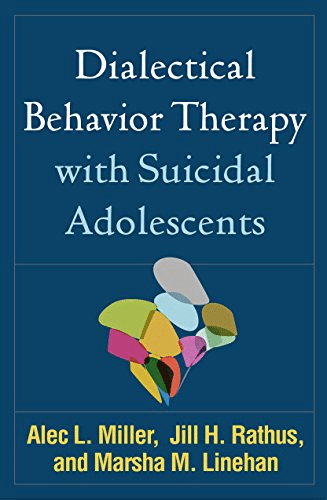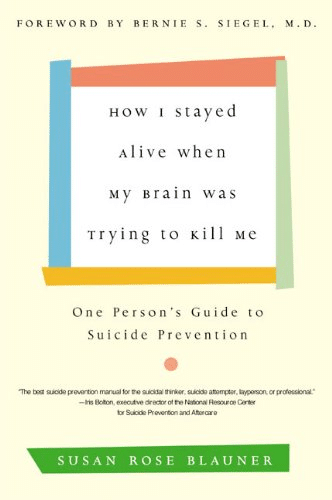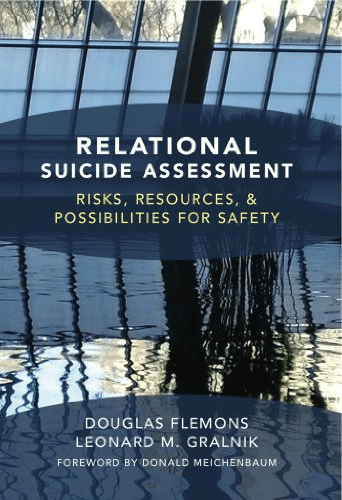Books for Therapists on Suicide & Ideation
Working with suicide ideation and intention is a delicate matter to everyone working in the mental health field. With that in mind, it takes a lot of study and practice to confidently and surely deal with suicidal patients. The next few books offer you the information and strategies needed to achieve that level of specialty, making sure that the reader understands the complexities of suicidal behavior.
To keep this site running, we are an Amazon Associate where we earn from qualifying purchases. While these links are amazon affiliate links, the selection of books remains accurate and unbiased.
“Clinical Manual for Assessment and Treatment of Suicidal Patients” by John Chiles, Kirk Strosahl and Laura Weiss Roberts

The Clinical Manual for Assessment and Treatment of Suicidal Patients is a complete guide that offers the most important and recent research on suicidal behavior and how to detect it. Through detailed explanations and complete case studies, this manual explores all aspects of suicide in order to make clinicians better equipped to prevent it, proving itself as a powerful tool to every practice.
“Dialectical Behavioral Therapy with Suicidal Adolescents” by Alec Miller, Jill H. Rathus, Marsha M. Linehan

Providing treatment to suicidal adolescents is often a tricky and complex process, but this book offers techniques and principles from dialectical behavior therapy to guide clinicians through it. With effective and research-based methods, it aims to auxiliate professional everywhere to integrate multiple aspects of a patient’s life to provide a powerful intervention.
“How I stayed Alive When My Brain Was Trying to Kill Me: One Person’s Guide to Suicide Prevention” by Susan Rose Blauner

Today, suicide is considered an international epidemic, affecting not only those assailed by suicidal thoughts, but also all people around the individual. Susan Rose Blauner knows that all too well, as she has been through the horrible experience of depression and suicide intention. In this book, she shares the story of how she escaped the dark fantasies and ideas surrounding death and passes on a message of hope and empathy.
Want a resource for every situation? We’ve got you covered.
There’s a huge amount of resources for therapists out there. We’ve made a resource for any topic between starting a practice to dealing with a patient problem. Inside you will find books, podcasts, TED talks, worksheets and forums. Sounds like it can help you now or in the future? Simply enter your email and it’ll be in your inbox for you to use!
“Relational Suicide Assessment: Risk, Resources, and Possibilities for Safety” by Douglas Flemons and Leonard M. Gralnik

Flemons, a family therapist, and Gralnik, a psychiatrist, explore their own clinic experiences and perform an extensive literature research to bring us this book on a crucial side of suicide assessment: the relational, with all its interpersonal risks and protective factors. This book provides a way to truly understand suicidal behavior in a context that’s bigger than a patient’s idividual experience, and teaches clinicians how to apply this knowledge to the practice.
“Why People Die by Suicide” by Thomas Joiner

Thomas Joiner is a clinical psychologist that draws from his own professional and personal experience to try and explain one difficult yet necessary question: why do some people take their own lives? Joiner uses examples from popular culture, substancial findings in research and a wide array of stories and anecdotes to explain one of the most seemingly unexplainable beahaviors that exist.
“Warum hast du uns das angetan?: Ein Begleitbuch für Trauernde nach einem Suizid” von Chris Paul

This book encounters a taboo subject: After suicide, very few relatives dare to focus on their own feelings of loneliness, anger and powerlessness. The renowned grief counselor Chris Paul deals with the question of how to deal with the grief after the suicide of a loved one. It describes the difficulties and chances of grieving in this extraordinary life situation. The »Kaleidoscope of Mourning« that she has developed also goes into the revision of the title, which has already been successfully introduced: a concept gives a realistic and comprehensible picture of the mourning processes.Trauma und Persönlichkeitsstörungen: Psychodynamisch-integrative Therapie
Looking for other books or resources?
Check out the ones below, or click below to download all of the resources we have!